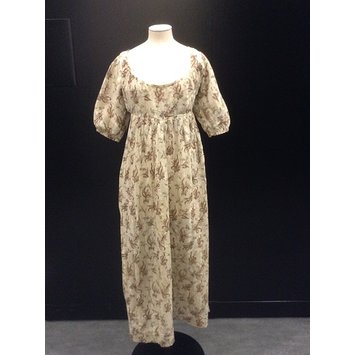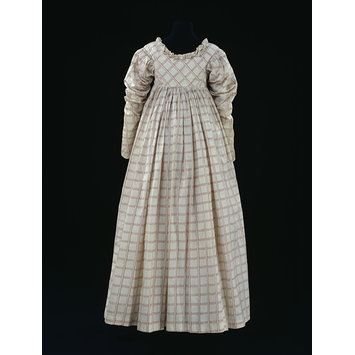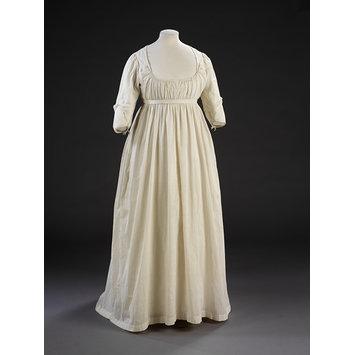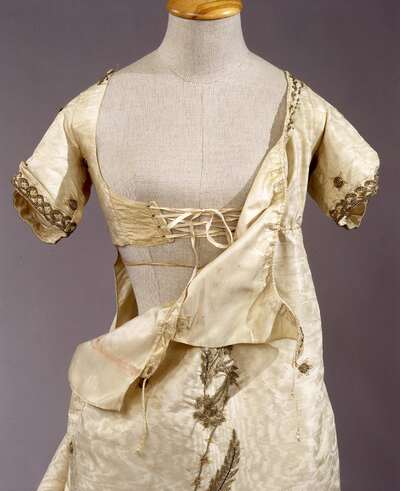Creating Historical Clothes: Pattern Cutting for the 16th to 19th Centuries by Elizabeth Friendship is another recommendation/loan from
Elise, a lady of excellent literary and sartorial taste.
This book reminds me a lot of
Period Costumes for Stage and Screen, so I'm afraid comparisons are inevitable. Still, there are a number of differences between them. First,
Creating Historical Clothes covers the 1500-1900 time span in a single volume, while
Period Costumes does it in two. They also differ in method:
Period Costumes teaches you to drape patterns, while
Creating Historic Clothes instead gives a solid introduction to drafting and grading flat patterns. Though both are aimed at historic costumers, and are well-supplied with research and period images, I'd say that
Creating Historic Clothes puts slightly more emphasis on the "historic" portion,
Period Costumes for Stage and Screen on the "costume". That being said, they cover similar ground, so a person who already owns one may find the other unnecessary.
Creating Historic Clothes starts out with a 60-page introduction explaining how to use the book to make your own patterns (whether historically authentic, passable, or "inspired by"), and manipulating basic patterns for bodices, sleeves, skirts, and trousers. Honestly, if you're interested in drafting, this section alone is worth the price of the book and it should see you through modern as well as historic patterns. Cartridge pleating (gauging to us mid-Victorian sewists) is also explained, though few other sewing techniques are handled.
Each section thereafter is divided up by century, with a two-page summary of fashion trends illustrated by period paintings, a glossary of costume terms, and a list of artists active at the time. It then goes through explaining how to draft patterns for bodices, sleeves, skirts, and foundation garments. Most of these are given in 5-15 year increments; for example, the 17th century chapter has bodice instructions labelled: "early 17th century", "1630-1645" (plus two variations), "c.1655-1665", "bodice with tabs", "c.1655-1670". Trends which do not follow the calendar are noted--so, if you're looking for late 1790s Empire gowns, you'll be directed to the early 19th century pages.
Note that undergarments (except for foundation pieces) and accessories are not included; the good news is that shifts/chemises, drawers, and petticoats are relatively straightforward, and the last can often be adapted from the included skirt patterns. Corsets/stays and various skirt supports (farthingales, panniers, hooped petticoats, bum rolls, bustles) are included.
Given the wide scope of the book, I am impressed with the amount of nuance included. You will likely want to consult additional references for specific historic impressions. For example, the 1850s-60s section of the book gives a pagoda sleeve, which is a valid style--looking at other period images, however, would also point you towards bishop and coat sleeve options (which could easily be adapted from the basic straight and two-piece sleeves in the basic drafting section).
Score: 5 stars for costumers, 4.5 for historic sewists
Accuracy: High. Some fine details are lost in the sheer amount of information, but it shows original images and references period manuals (as well as secondary sources).
Difficulty: Intermediate and up. You're on your own for the sewing, but the pattern manipulations are well-explained.
Strongest Impression: A versatile, well-researched costume-patterning book that I'd recommend to anyone costuming a period play or film, doing history-themed cosplay, or learning to draft patterns. Living history sewists will likely find this book useful, particularly if looking for a single title that covers four centuries of women's clothing; others may want more period-specific sources, and/or ones which cover period sewing techniques in greater detail. Someone with a large collection of costuming books may find this one redundant.







































